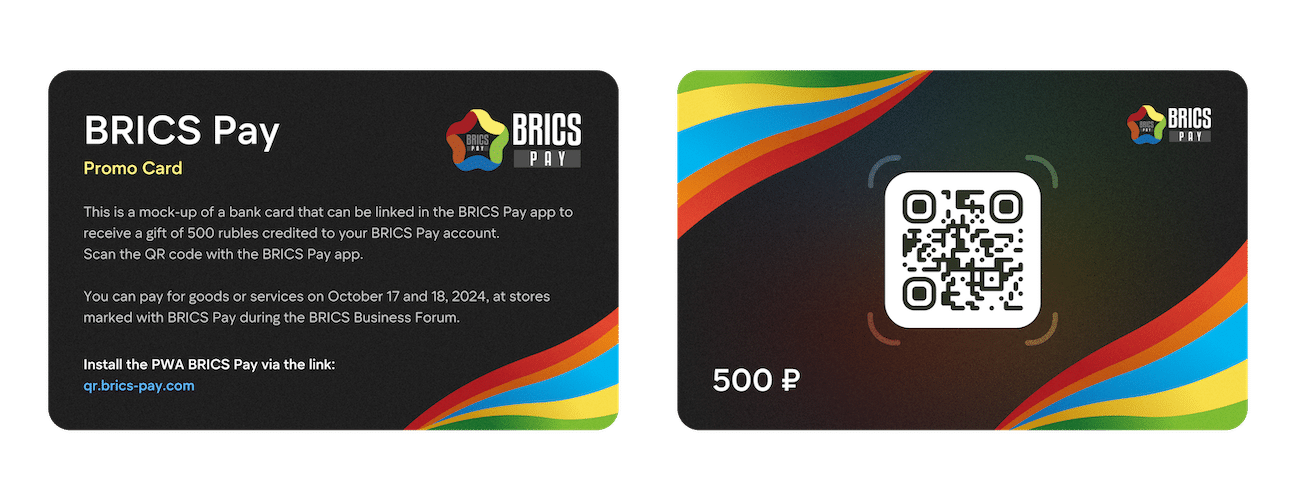One of the key topics to be discussed by BRICS members at their upcoming summit is the potential establishment of an inter-BRICS payment system designed to bypass reliance on the US dollar. The growing concern over the US weaponizing the dollar, particularly after the decision to seize Russian assets amid the conflict with Russia, has caused unease among central banks worldwide. Although the process of de-dollarization will likely take several years, it has already begun.
BRICS Push for Digital Payment System Amid US Dollar Decline
The BRICS nations are actively seeking alternatives to the US dollar, driven by a series of economic pressures. The situation escalated in December when the US imposed “strangulation sanctions” on Russian banks, leading Turkey and China to cut ties with Russia. This severely impacted Russia’s trade, and after further sanctions in June targeted Moscow’s exchange, Russia was forced to halt dollar trading. The result was a liquidity crisis in yuan, Russia’s new foreign exchange medium after its pivot to the Chinese currency in 2022. Facing these challenges, Russia’s financial leaders concluded that a digital currency solution was essential.
Globally, the US dollar’s dominance has been waning, hitting a 30-year low in global reserves. Russia, which sold off most of its dollar reserves before its conflict with the West, now holds about $300 billion in reserves, largely in yuan and gold. In response, central banks worldwide have ramped up gold holdings, driving prices to record highs.
China, mirroring Russia’s actions, has also reduced its US Treasury holdings, dropping from $1.1 trillion in 2021 to $835 billion by mid-2023. China has been diversifying its reserves by investing in gold, euros, and other currencies to prepare for potential confrontations with the US. Both Russia and China have shifted to settling their trade in national currencies, with trade between the two nations reaching $186 billion in the first half of 2024. They even plan to reintroduce barter trade, bypassing monetary systems to avoid US sanctions.
In this climate, BRICS countries are exploring the introduction of a non-dollar currency for trade, with plans for a BRICS coin on the horizon. Russia has already laid the groundwork, passing laws to regulate digital currencies and conducting its first international trade deal using cryptocurrency. The idea of a blockchain-based BRICS payment system was proposed in early 2024, aiming to leverage digital currencies and blockchain technologies to reduce dependency on the US dollar. However, convincing other nations to adopt this system will be a challenge, though interest from the Global South suggests potential success.
A Milestone for Financial Autonomy in BRICS
The BRICS economic alliance has taken a significant step forward with the official launch of its long-anticipated BRICS Pay system. During the BRICS Business Forum in Moscow, participants were presented with newly issued cards, marking the debut of the project that had been in the works for quite some time. The cards were made available to forum attendees, signaling the arrival of this pivotal financial tool.
Reports from Russian State Media noted that these demo cards contained 500 rubles, enabling their use at three specific locations within the World Trade Center. Attendees at the forum had the opportunity to utilize the cards throughout the two-day event, which spanned Thursday and Friday. The ability to make purchases during the event provided a practical demonstration of how the payment system might function in real-world scenarios.
For the past two years, the BRICS bloc—comprising Brazil, Russia, India, China, and South Africa—has been actively working to achieve greater financial autonomy. A key focus of this effort has been the reduction of reliance on Western currencies, particularly the U.S. dollar, through a process known as de-dollarization. The unveiling of BRICS Pay comes just a week before the bloc’s annual summit, reflecting significant progress toward these objectives.
Participants at the Business Forum were introduced to the demo version of the BRICS Pay card. This card is linked to a blockchain-based system, and funds were pre-loaded for use by those attending the event. Purchases using the card were reportedly limited to beverages and souvenirs, giving a glimpse into how the system might operate when fully implemented. The card can be registered via a QR code, further showcasing the system’s modern technological approach.
Looking Ahead to the Full Launch at the BRICS Summit
The BRICS Pay system’s full-scale launch is expected to take place during the upcoming BRICS 2024 Summit, which is just around the corner. The summit will likely provide a more comprehensive understanding of the payment system, including key details about its participants and its broader functionality. As the BRICS alliance seeks to increase local currency trade, the introduction of BRICS Pay represents a strategic move to challenge the dominance of the U.S. dollar in international trade.
This development offers a significant opportunity for the global south, as the system could foster greater financial independence and reduce dependency on Western financial systems. The official launch at the summit will provide further clarity on how BRICS Pay will contribute to the bloc’s long-term goals of economic sovereignty and collaboration among member nations.
BREAKING: BRICS officially unveils a new demo of its payment system, BRICS Pay. pic.twitter.com/DOrPC21uaS
— BRICS News (@BRICSinfo) October 17, 2024
FreeDum Fighters – Crypto Presale with Political Staking and Rewards
With the U.S. elections approaching, the crypto space has seen the rise of politically themed memecoins, and FreeDum Fighters is one of the standout projects in this category. What makes FreeDum Fighters unique is its debate reward system, where users engage in discussions on topics like politics and earn airdrops for winning debates. This creates a dynamic way to interact and earn within the community.
In addition to the debates, FreeDum Fighters offers a staking model that lets users stake $DUM tokens in support of one of two satirical characters: Kamacop or Magatron, both inspired by real-world political figures. Staking rewards are tied to the popularity of these characters, allowing users to make strategic decisions based on who is leading at any given time.
The project has gained traction quickly, with an active and growing community engaging on social media. This strong community backing is often a good sign for presale projects. Furthermore, FreeDum Fighters has passed audits by Coinsult and SolidProof, adding an extra layer of credibility for early investors.
With a presale price of just $0.00005, the project offers a low-cost entry point. Its roadmap aligns perfectly with the U.S. elections, presenting an opportunity for growth as political discussions intensify. As FreeDum Fighters continues to build momentum, it presents a time-sensitive chance for investors to get involved early, with staking rewards and an engaging community as key attractions.
Visit FreeDum Fighters Presale
Related News
- India’s Shift Towards Cryptocurrency for Trade within the BRICS Bloc
- China and Russia Accelerate State-of-the-Art Payment System for BRICS and SCO Currencies
- Russia’s Shift Toward Crypto Amid Sanctions
- Trump Family’s World Liberty Financial Project Aims To Preserve Dollar’s Global Dominance Via Stablecoins
Best Wallet - Diversify Your Crypto Portfolio
- Easy to Use, Feature-Driven Crypto Wallet
- Get Early Access to Upcoming Token ICOs
- Multi-Chain, Multi-Wallet, Non-Custodial
- Now On App Store, Google Play
- Stake To Earn Native Token $BEST
- 250,000+ Monthly Active Users


